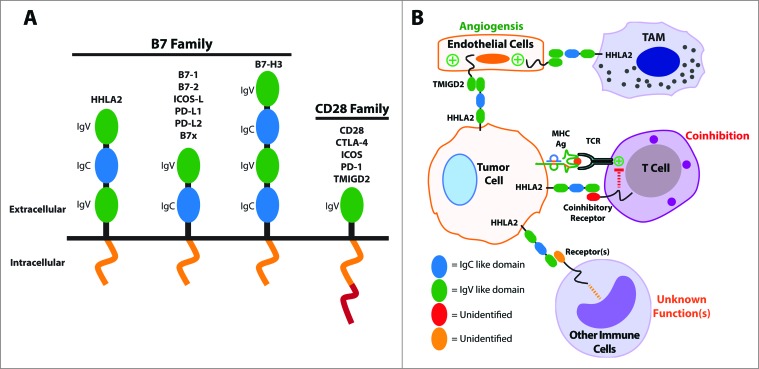Figure 1.
The B7 and CD28 families and the significance of HHLA2 and TMIGD2 within the tumor microenvironment. (A) A structural representation of the B7 and CD28 family members. (B) A proposed model for the roles of HHLA2 and TMIGD2 within the tumor microenvironment. Tumor-expressed HHLA2 can interact not only with an unidentified receptor on activated T cells that leads to coinhibition, but also with TMIGD2 on endothelium that stimulates tumor angiogenesis. Additionally, tumor-expressed HHLA2 can bind to other immune cells and likely affects their functions in ways that are not yet understood. Finally, tumor-associated macrophages (TAM) may express HHLA2 and interact with TMIGD2 on endothelium.

